Restorative Dentistry Easton PA:
Fabey Dental Services
Restorative procedures help protect both oral health and overall health while improving the appearance of the patient’s smile. The right restorative procedures at the right time, combined with advanced dental technology and comprehensive dental care, can reduce the need for additional dental work in the future.
The Biomimetic Approach
Biomimetic Dentistry is defined as the reconstruction of teeth to emulate their natural biomechanical and esthetic form and function. Simply put, biomimetic dentistry means to copy what is life-like. With biomimetic dentistry, only the damaged and decayed part of the tooth is removed and the final restoration is bonded to the remaining healthy natural tooth structure. Biomimetic restorations include stress-reduced direct composite restorations and porcelain/composite inlays and onlays that restore the biomechanics of broken and damaged teeth.
When restoring damaged, broken, and decayed teeth, the goal is to return the tooth to its original strength, function, and esthetic. Biomimetic dentistry accomplishes all of this in a conservative approach with strong and attractive results.
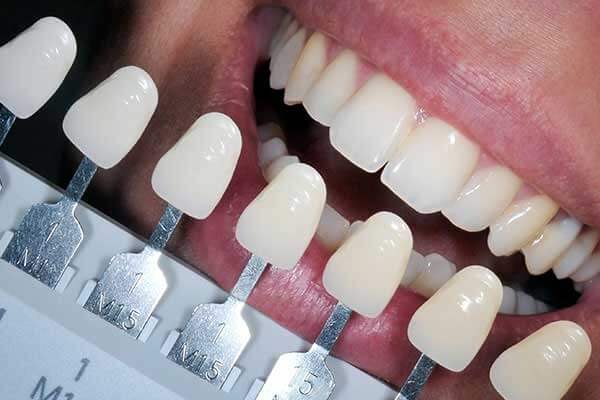
Composite Fillings
Composite fillings use tooth-colored material to restore teeth with cavities and maintain a natural appearance. Maintaining optimal dental health is crucial to prevent tooth decay, which can lead to the need for fillings. Once the decay is removed, the tooth is filled with a composite material which is then cured using a specialized light to harden the material. Composite fillings can be done in one visit.
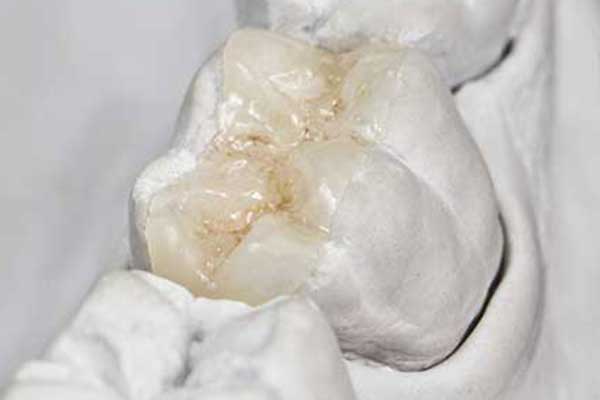
Inlays and Onlays
An inlay or onlay is a partial crown restoration that can be placed when there is not sufficient tooth structure to support a filling but enough tooth structure left that a full crown is not needed. Inlays/onlays are made of porcelain or gold, and they aesthetically and functionally replace the missing tooth structure.
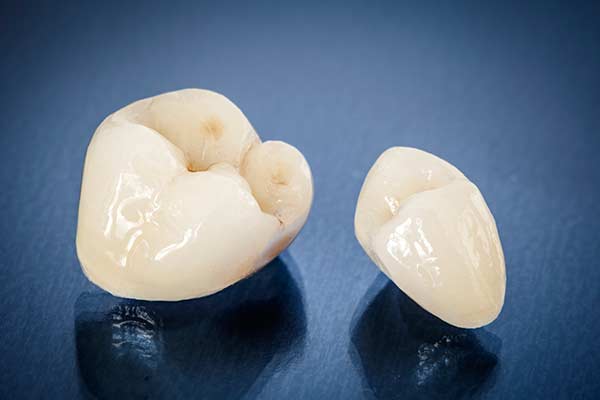
Crowns
A crown is a dental restoration that completely covers the outside of a tooth that is cracked, broken, worn down, or severely decayed. It is commonly used in dental emergencies to restore broken teeth. Dental crowns are usually completed in two visits. During the first visit, the tooth is prepared (shaved down) and an impression is taken. A temporary crown is placed while the permanent crown is fabricated. During the second visit, the permanent crown is carefully fitted and then cemented into place.
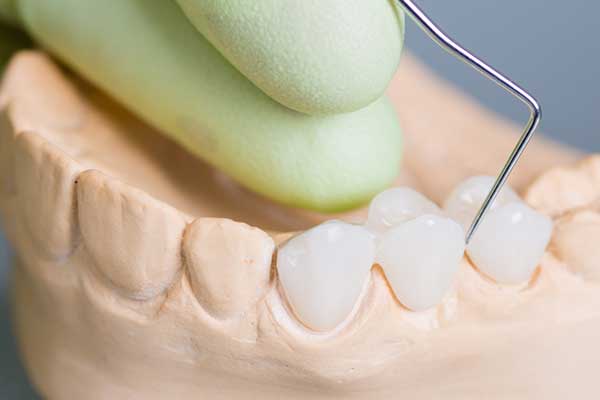
Dental Bridges
A bridge can replace missing teeth without the use of a denture or dental implant. A bridge is composed of two crowns and a replacement tooth or teeth. Crowns are typically placed on the teeth on either side of the space, with the fabricated tooth or teeth attached in between.
For multiple missing teeth, an implant may be used to anchor the bridge.
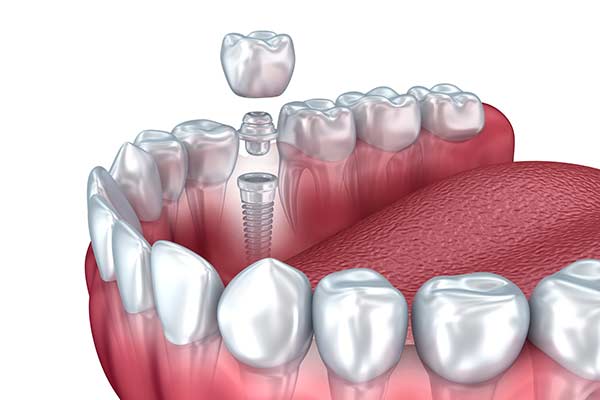
Implant Restorations
Dental implants are composed of three pieces: a small screw made of a biocompatible metal called titanium, an abutment which connects the screw and the final restoration, and the final restoration. Cosmetic dentistry procedures, such as teeth whitening, veneers, and smile makeovers, can also enhance the appearance of your smile. The screw, which is placed in the jawbone, acts as a replacement for the tooth root, providing a strong foundation for fixed or removable replacement teeth. The screw begins to fuse with the bone over the course of a few months. After the fusing process, known as osseointegration, the abutment is inserted into the screw to allow for the permanent attachment of the restoration.
Dentures
A denture is a replacement for multiple missing teeth within the same (upper or lower) arch. A denture differs from a crown or bridge in that it does not rely on an existing tooth structure, and it completely replaces the missing teeth.
There are several different types of dentures:
- Full or Partial
- Removable or Fixed
- Traditional or Implant-Supported
Frequently Asked Questions
Are composite fillings better than amalgam fillings?
There are many perks to having today’s composite fillings over the metal amalgam fillings from years ago. And this often makes them a better option. For instance, composite fillings contain no mercury, blend in with your natural teeth, and are not sensitive to hot/cold temperatures.
How long does it take to get dental implants?
Because dental implants fuse together with the jaw bone before adding the artificial tooth, the process can take a few months to complete. Though, the time frame can vary from patient to patient. It is important to note that if extractions are necessary before the implant or if bone grafting is required, this could push out the treatment’s completion date.
What are dental implant supported bridges and dentures?
Dental implant-supported bridges and dentures are anchored and supported by dental implants. In other words, rather than using the surrounding teeth as anchors for a dental bridge, dental implants will support it. And dentures are more steadily held in place with the implants, leaving them feeling more functional and less likely to slip out.
How long do dental crowns last?
On average, dental crowns last about 10 to 15 years before needing to be replaced. With exceptional oral hygiene, they can last upwards of 20 years.
How many teeth can a dental bridge replace?
A dental bridge can be used to replace one tooth or multiple teeth. Most commonly, dentists will use a bridge to replace anywhere from one to four teeth – maybe even more. Of course, this will vary and can better be determined after an examination by your dentist.
Does dental insurance cover restorative dentistry procedures?
Generally speaking, restorative dental procedures are often covered by dental insurance, at least in part. Many may pay 50% to 80% of the cost of the procedure. Keep in mind that dental insurance policies differ in the coverage they offer – and depending on the nature of the treatment.
What is the difference between restorative dentistry and cosmetic dentistry?
Restorative dentistry is used to restore the function of teeth. This includes teeth that may be broken, chipped, damaged, decayed, or missing. Using many restoration procedures, the tooth can be restored with its full functionality returned.
Cosmetic dentistry focuses more on the visual appearance of your teeth rather than the function of them. Cosmetic dentistry services include treatments and procedures aimed at improving the shape, size, color, position, and alignment of your teeth, ensuring a beautiful smile.
Can my smile be restored?
Absolutely! With so many different types of restorative dentistry available, there are many treatments to take advantage of. It is best to schedule an appointment with the team at Fabey Dental. This will help us evaluate your needs and develop a treatment plan. For your convenience, you can schedule an appointment online.
We look forward to restoring your smile.
Back to Services
